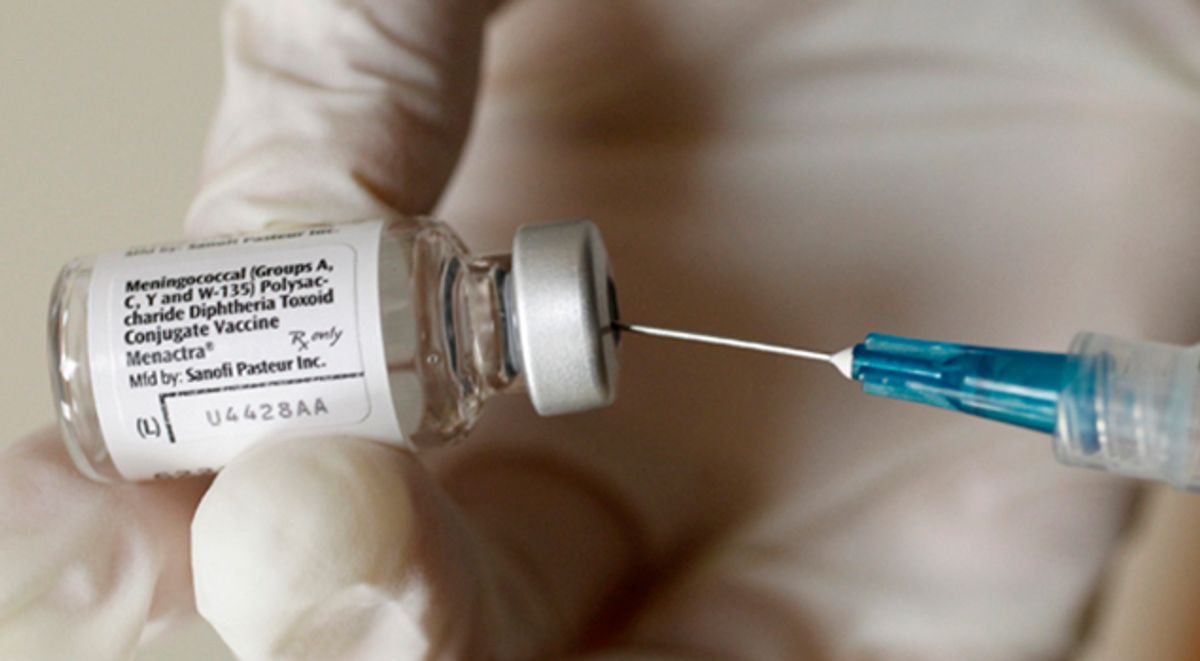By correcting one potential error, the Ventura County (Calif.) Health Care Agency accidentally made another — and jeopardized vaccines given to thousands of people in the process.
In October 2017, county health officials, concerned that vaccines were getting too warm while being transported to clinics, changed their protocol. But a routine audit in November found that the ice packs they were using may have frozen some of the medicines and lowered their effectiveness. The agency then offered to reimmunize everyone who had received a vaccine that was delivered in faulty packaging.
“There’s no way to tell whether or not they were ineffective,” said Jason Arimura, director of pharmacy services for Ventura County Medical Center. Out of an abundance of caution, “we just notified everyone.”
The number of patients affected: 23,000.
Ventura County is far from the only case of vaccines feared to be ineffective reaching patients. In the past 13 months alone, 117 children received possibly compromised vaccines against polio, meningococcal disease and the human papillomavirus at an Indian Health Service clinic in Oklahoma City because of improper refrigeration. Similar issues with temperature control prompted a health clinic in Indianapolis to send letters offering to revaccinate 1,600 people last January, according to local news reports.
On Feb. 1, Kentucky officials announced that potentially ineffective and contaminated vaccines were administered at multiple businesses across Kentucky, Ohio and Indiana. The statement did not disclose how many people were affected.
The federal government sets standards on the storage of vaccines. However, not all health care providers are accountable under those guidelines.
The Vaccines for Children (VFC) program, which offers these drugs at no cost for kids from low-income families, requires clinics, doctors and other providers to undergo annual audits and use top-grade equipment, such as continuous temperature-monitoring devices. It also requires that problems be reported to federal authorities.
More than 44,000 doctors participate in the program and provide vaccines to 90 percent of the children in the country, according to the Centers for Disease Control and Prevention.
But medical facilities outside of the program — like many pharmacies and internists with private practices who are treating adults or children not in the VFC program — have no comparable federal oversight. In fact, storing vaccines and reporting cases of patients receiving ineffective drugs is largely up to their discretion. The vaccines involved in the Ventura County recall were not part of the Vaccines for Children program.
Experts said most hospitals, clinics and doctors are vigilant in properly storing their vaccines. And research suggests that compromised vaccines given to patients are not harmful.
L.J Tan, chief strategy officer for the nonprofit vaccination advocacy group Immunization Action Coalition, said the nation’s vaccine stock is likely one of “the safest in the world.”
But improperly handling these medications means wasting expensive drugs, and using compromised vaccines “could create a pocket of underimmunized individuals,” said Dr. Julie Boom, a pediatrician and director of the immunization project at Texas Children’s Hospital. “And we don’t want that to happen.”
In Ventura County, the temperature problems affected vaccines for flu, tetanus, diphtheria, whooping cough and hepatitis B. County health officials told patients who had received tuberculosis testing and some who had received penicillin to treat syphilis that their medicines also may have been compromised.
Through January, approximately 1,200 have come back to be revaccinated, Arimura said. Revaccinating all 23,000 people would cost $1.3 million, he added.
Vaccines are extremely sensitive to temperature fluctuations. In some cases, exposing a vaccine to the wrong environment once can effectively kill live viruses and harm proteins in the vaccines, said Tan. Generally, temperature problems occur during transportation of medicines.
Without proper monitoring, it is nearly impossible to tell whether vaccines have been exposed to extreme temperatures, said Boom.
A 2012 report by the inspector general at the Department of Health and Human Services found that, in a two-week period, three-quarters of the 45 health care providers who were sampled — all of which participated in the Vaccines for Children program — exposed their vaccines to improper temperatures for at least five cumulative hours.
A separate study by researchers at the federal Centers for Disease Control and Prevention published in 2015 found that 23 percent of the vaccination errors reported to the federal surveillance system from 2000 to 2013 involved improper storage or the use of expired vaccines.
Since these reports, the CDC put in place additional requirements for the children’s program, including recording the minimum and maximum temperature of the vaccine storage unit daily.
Dr. Paul Hunter, associate professor of family medicine and community health at the University of Wisconsin, said the federal oversight is “very good.”
“In the big picture, they do it very consistently,” he said.
For doctors and clinics outside the federal surveillance system, financial concerns often force them to take special care with vaccines and similar medicines. One vaccine dose can cost hundreds of dollars.
Sanford Health, a South Dakota-based health care system with operations across the Midwest, is working to make the federal requirements the standard for vaccines among its health care providers. The system started Vax Champ, a six-month training program for nurses to learn how to store and handle vaccines. The program requires participants to periodically take photos of their vaccine stocks and send in a list of all their inventory for review.
Funding for the program came from the vaccine manufacturer Sanofi Pasteur.
Andrea Polkinghorn, immunization strategy leader for Sanford Health, said vaccine storage systems vary widely among providers. Purchasing pharmaceutical-grade storage equipment is costly, she said, and providers are in different phases of the upgrade.
“But when you compare that to the projected loss of vaccines,” Polkinghorn said, “the end is worth the means.”



Shares